Motorcycles Technology
CBR1000RR - History : Episode04
Beyond ease of handling lies the joy of control
Beyond ease of handling lies the joy of control
The first-generation CBR900RR changed the definition of “super sport bike” from high-output, high-displacement machine to something entirely new. The 2000 CBR900RR fully realized the experience of enjoyable riding on the street. Building on the approach of these predecessors, the 2004 CBR1000RR introduced the Unit Pro-Link and other leading-edge racing technologies. The 2008 CBR1000RR took the goal of the original CBR900RR—to be the most lightweight and compact bike in its class—to the next level with further technological advancements. Then, 20 years after the debut of the series, the twelfth-generation CBR1000RR launched in 2012. Many changes have taken place in these two decades, and every manufacturer has introduced its own interpretation of the super sport bike concept. Even among these many options, however, the pioneering CBR series has things to offer riders that the others do not.

Twelfth-generation 2012 CBR1000RR

What the CBR series alone can offer riders
Former Honda Racing Corporation (HRC) works rider Hikaru Miyagi: Twenty years ago the CBR900RR created this new genre of motorcycle, and today not just the four big motorcycle manufacturers in Japan but also overseas companies have introduced models, and the category is really in its heyday, isn’t it? For my magazine work I get to test-ride a lot of different bikes, and each has its points of appeal. Riders can select from all these options and ride what they like. As someone who has long been involved with the CBR series in one way or another, I’m interested in your perspective on what the series has to offer riders that the other bikes don’t.
Twelfth-generation CBR1000RR Large Project Leader (LPL) Yuzuru Ishikawa: In a word, it’s the ease of handling that we’ve continued to develop over the 20 years since the original CBR900RR launched. Technology keeps on advancing, but ease of handling isn’t something you can develop overnight. If taken at face value, the phrase “ease of handling” may lead people to think that Honda’s bikes are too simple and thus not interesting, but our firm belief is that, unless a bike is easy to control, a rider won’t enjoy riding it.
Miyagi: You’ve put a lot of work into fuel management and enhancing the level of control when the rider starts to open the throttle. You’ve adjusted the output characteristics so that there isn’t too much sensitivity to throttle input in the high rpm range. You’ve really put a lot of work into all these details.
Ishikawa: Instead of having the rider nervously search for the right amount of throttle when opening it up, we wanted the bike to feel as though there’s absolutely nothing between the right hand and the rear tire. In other words, a feeling of there being a direct connection between the two. No matter how closely someone looks at the spec sheet, it’s unfortunately not going to convey that special riding feel. Yet by thoroughly refining the engine, frame, suspension, aerodynamics and all the other structural elements that make up a motorcycle, we’re confident that we’ve been able to provide riding enjoyment that other models can’t offer.
Miyagi: Right. A good example is the suspension with the new structure that controls damping force in a new way, and you also have the new system that uses aerodynamics to reduce lift. Starting with the 2000 model, you had the 17-inch three-spoke wheels, but in the new model you’ve changed those completely, so even with the wheels you’re taking on new challenges.
Final assembly team leader Kyoichi Yoshii: In all of the model years, we’ve been very particular about making the riding feel as light as possible, and the wheels are a part of that. In the new wheels, by increasing the number of points at which the spokes support the hub, we’ve minimized the change in grip that occurs during turning.
Twelfth-generation CBR1000RR designer Daisuke Tokumura: The design team had been urging us to change the design of the wheel for a long time. The three-spoke design was used for so long because it had definite benefits. But we felt that we needed a design that more directly conveyed a light feel. We tried five-, seven- and nine-spoke designs, but the one that looked the most lightweight and had the lightest feel during test-riding was the twelve-spoke design we ended up with.

Miyagi: I see. As far as overall styling is concerned, as compared to the 2008 model, the 2012 model has a much sharper look to it.
Tokumura: That’s true. Our thoroughgoing approach to lightweight, compact design with concentrated mass that we expressed on the 2008 model has remained the same, but at the same time we wanted to convey super sport bike dynamism in a more direct way. As with the wheel design we were just discussing, we’ve combined design elements that would intuitively communicate to a person looking at the bike the lightness and speed that is the essence of a super sport bike.
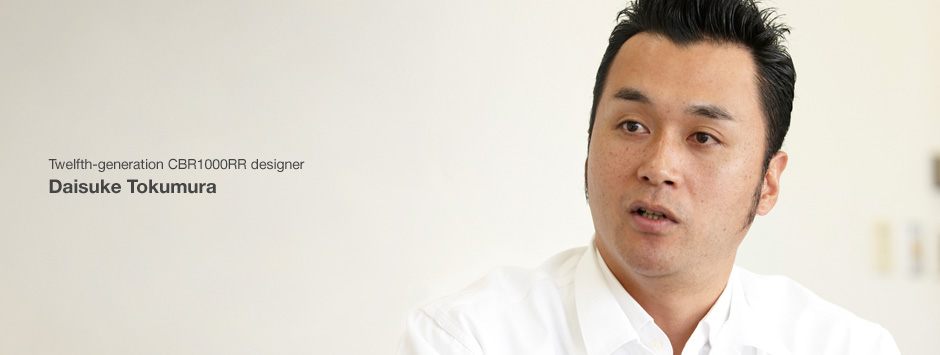
Re-envisioning sporty riding in the era of electronic control
At Honda, it is often said that a racing motorcycle is a laboratory on wheels. In other words, technologies that excel in the grueling racing environment, in which a rider requires the utmost in speed and reliability, can often benefit riders outside that environment as well. In fact, a wide range of Honda technologies currently available on commercially produced motorcycles were first developed for the racing circuit.
Miyagi: For MotoGP, Honda developed a truly wonderful electronic traction control system. You even put in attitude control technology that you developed for ASIMO and pursued to the limit the goal of reducing rider burden. For this reason, it’s a technology that’s definitely in the Honda tradition. Have you thought of using this technology to further enhance the CBR1000RR’s ease of handling?
Yoshii: I think that’s a great system that really puts the rider first, and if it’s used on a future CBR series bike, putting the rider first is something that definitely won’t change. But for the current model, we asked ourselves, “How we should define ‘sporty riding’ so as to offer the customer true enjoyment?” The European model offers over 170 horsepower, yet the rider feels at one with the bike, which seems to read his or her intentions, and there is a feeling of superb control. We put a lot of time into creating this level of ease of handling and freedom, and every rider can get maximum enjoyment out of controlling the bike at his or her level. That is what we were particular about accomplishing on this model.

Miyagi: There are riders out there who want to try riding a super sport bike but hesitate, wondering if they can really handle one. For many such riders, the introduction of ABS has really opened the door. By fine-tuning the throttle function, you made the bike quite controllable for beginners and experts alike—something that all riders can enjoy. In every aspect of the bike, you took things as far as they could go without the help of electronic devices.
Yoshii: Suppose someone comes home after riding the CBR1000RR all day and says, “I really got my body into the sport of riding today, and it felt great!” If that’s how the person feels, then we are totally satisfied with that. What we don’t really want is the person saying, “The engine did this,” or, “The CBR1000RR was like that.” That’s why, at this current point in time, we feel that refining all the basic structures of the bike to create a complete whole is the best approach.
Seventh-generation CBR1000RR Large Project Leader (LPL) Hirofumi Fukunaga: Of course, there are people who think that it would be better to use traction control, engine mapping adjustments and other forms of electronic control. Whether these features get used by riders or not, they think that having them on the bike adds value. Yet there’s no substitute for the enjoyment that comes from controlling a bike with nothing coming between rider and machine. To make this happen, we literally did everything we could on this model. Over the past 20 years, we’ve responded to the needs of the times and tried many different approaches. But we’ve always worked hard at polishing the fundamentals of the motorcycle to let riders enjoy the sport of riding and work up a good sweat. The 2012 CBR1000RR is one complete realization of this goal.
Creating a fun relationship between super sport bike and rider
Honda’s super sport bikes don’t have excessive engine power that needs to be trained like a horse, nor are they like racing machines, with behavior that can only be controlled by the elite few. Rather, the door to the CBR series is open wide to all riders, inviting them to ride, experience the joy of control and make their lives more enjoyable.
Former Honda Racing Corporation (HRC) works rider Hikaru Miyagi: In our conversation, one thing that’s made an impression on me is how much the concepts “control” and “handle” have been mentioned. The two seem at first glance to be the same, but are they really?
Fifth-generation CBR900RR (CBR929RR) Assistant LPL Kenji Hasegawa: The fact is that there are other bikes out there that offer the joy of control. But if a bike doesn’t also offer ease of handling, then the rider isn’t going to be able to control it freely and will be completely tired out after getting home from touring.

Miyagi: That’s true. When a guy gets home from touring all around the Izu Peninsula [a resort area about 100 km from Tokyo] on his CBR series bike and his wife says, “I was out all day and didn’t have time to make dinner. Let’s go out to eat,” he’ll be able to say, “Sure, just let me get a quick shower,” because he’s got mental and physical energy left over. And it’s not just the CBR series but all Honda bikes that have this quality. His family won’t be happy if he says, “No way! I’m tired, so just bring something home.” [Laughs.]
Final assembly team leader Kyoichi Yoshii: I think “handle” in the sense we’re talking about means handling something as a tool and to what degree that’s easy and convenient. I think it’s the same as with cleaning the house and washing clothes: it’s an important everyday task, but if possible you don’t want to get all sweaty doing it. Since it’s work that you have to do, you want to get it done as efficiently as possible. I think most people think this way. In a motorcycle, “ease of handling” would refer to how nimble the bike is, how easily the rider’s feet touch the ground and how smoothly it moves, turns and stops. On the other hand, “control” refers to something beyond that. It’s the realm where you work up a sweat but enjoy doing it. Ease of handling is what allows a rider to go beyond mere handling and truly become absorbed in controlling the motorcycle.
Miyagi: I think riders who commute to work on their CBR1000RR bikes are very grateful for that. After work they’re probably tired, but since they don’t have to put too much effort into the operation of their bike, they’re likely to get in the mood to take the long way home.
Yoshii: Take for example a person like me, who lives in a tiny little place in Tokyo. If the bike isn’t easy to handle, then I’ll probably be worn out just getting the bike out of the back of the garage even before I can work up a good sweat on a tour. [Laughs.] Not everyone has a big garage or the strength to push around a big bike. Young people, people who are getting back into riding after a hiatus, men, women—to help as many people as possible make a super sport bike a fun part of their lifestyle, ease of handling is absolutely indispensable.
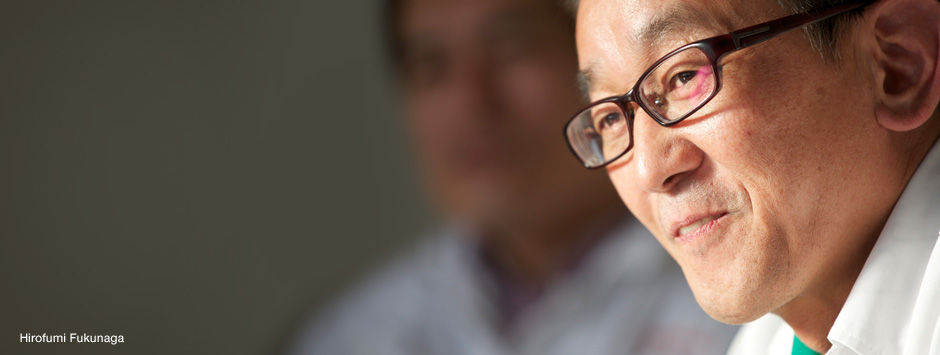
Miyagi: I see what you mean. Well, our time is almost up. The last word will go to Hirofumi Fukunaga. As a Large Project Leader (LPL), how would you convey the appeal of the 2012 CBR1000RR to someone who is considering buying one?
Seventh-generation CBR1000RR Large Project Leader (LPL) Hirofumi Fukunaga: Right now, there are many super sport bikes available out there, but the bike that is truly focused on making sporty riding fun is the twelfth-generation CBR1000RR. I think it’s safe to say that, for riders who really love controlling a motorcycle, the new CBR1000RR is a gem that we’ve been polishing for the past 20 years. Honda offers customers a wide variety of models, but the CBR1000RR is perhaps the only one we’ve developed for so long with such a single, unwavering concept. It’s so much so that, if a rider were to ride a CBR, then ride another manufacturer’s motorcycle and now come back to the new CBR1000RR, I think he or she would say, “This is that same CBR feel!” We’ve tried many different approaches over the years, but I’m confident that we’ve built the new CBR1000RR to be completely true to its roots. I’d like to say that, for those riders who love riding and controlling a motorcycle and who are looking for a bike that provides total control, without a doubt the new CBR1000RR is the best choice and the right partner.
Miyagi: Excellent. The CBR1000R is a motorcycle in which Honda seems to have complete confidence. So it can satisfy a true bike fan like myself?
Fukunaga: Absolutely. I am positive that you will be completely satisfied.
CBR1000RR - History
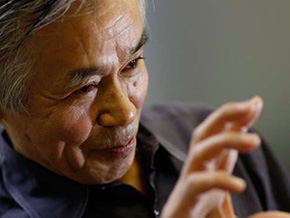
Episode 00 : Challenging the supremacy of engine power
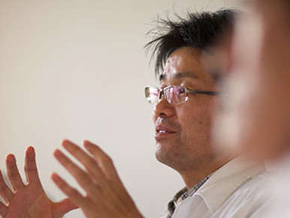
Episode 01 : Lightweight design that transcends the spec sheet
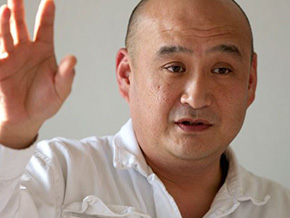
Episode 02 : Racing technologies prove their value on the street

Episode 03 : Still shining bright―the origins of the CBR series
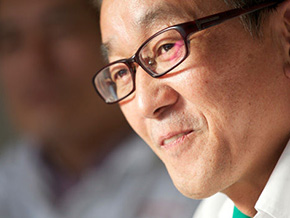
Episode 04 : Beyond ease of handling lies the joy of control